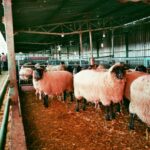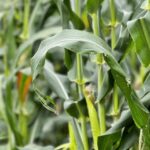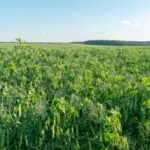Carbon farming refers to agricultural practices that aim to capture and store carbon dioxide (CO2) from the atmosphere, primarily through soil management, crop management, and land-use changes. These practices play a significant role in mitigating climate change and improving soil health. As South African farmers look for ways to reduce their carbon footprint and increase sustainability, carbon farming offers promising opportunities. However, there are several common mistakes that farmers make when implementing carbon farming practices. Understanding and avoiding these mistakes will ensure more effective carbon sequestration and improved agricultural productivity.
1. Lack of Understanding of Soil Carbon Dynamics
Soil carbon sequestration is central to carbon farming, but many farmers fail to fully understand the complex dynamics of soil carbon. Soil is not just a passive carbon sink; it is an active system where carbon storage depends on multiple factors, including soil type, moisture, temperature, and organic matter content. Without understanding how soil functions, farmers may apply practices that are not effective or sustainable in the long run.
Solution: Invest time in soil testing and research to understand the carbon storage potential of your soil. Consult with experts and agronomists to determine the most effective carbon farming practices for your farm’s unique soil conditions. This includes understanding the different forms of carbon in the soil, such as soil organic carbon (SOC), and how farming practices affect them.
2. Overlooking the Importance of Soil Organic Matter
Soil organic matter (SOM) is crucial for carbon sequestration as it holds significant amounts of carbon. However, many farmers make the mistake of neglecting the importance of SOM. Practices that reduce SOM, such as excessive tilling or monocropping, can lead to carbon loss from the soil, defeating the purpose of carbon farming.
Solution: Incorporate practices that increase SOM, such as cover cropping, crop rotation, mulching, and agroforestry. These practices help enhance soil structure, improve water retention, and increase the soil’s ability to store carbon. Reducing tillage is also essential to prevent the release of stored carbon into the atmosphere.
3. Failing to Diversify Crop Systems
Monocropping (growing a single crop over large areas) is common in many agricultural systems, but it can hinder carbon sequestration. Monocropping reduces soil biodiversity, leads to soil degradation, and can make soil less capable of storing carbon. Over time, this can diminish the land’s potential to sequester carbon and negatively impact farm productivity.
Solution: Implement crop diversification strategies such as crop rotation, intercropping, and agroforestry. These strategies can improve soil fertility, increase organic matter, and enhance the soil’s ability to sequester carbon. By growing a variety of crops, you can also reduce the risk of pest and disease outbreaks, making your farm more resilient.
4. Ignoring Livestock Management Practices
For farmers with livestock, it’s important to understand the role that animal grazing and manure management play in carbon farming. Overgrazing can lead to soil erosion and a decrease in soil carbon storage, while improper manure management can release methane (a potent greenhouse gas) into the atmosphere. Both of these issues contribute to carbon loss, undermining carbon farming efforts.
Solution: Implement rotational grazing systems to allow pastures to regenerate and increase soil organic matter. Use manure as a resource by composting or applying it to fields as organic fertilizer. This not only enhances carbon sequestration but also improves soil fertility. Ensuring proper manure management can reduce methane emissions, making your farm more carbon-efficient.
5. Lack of Regular Monitoring and Data Collection
Carbon farming practices require consistent monitoring to assess their effectiveness. Many farmers make the mistake of implementing practices without tracking progress or measuring results. Without data, it is difficult to determine if carbon sequestration is occurring or whether adjustments are needed to improve practices.
Solution: Invest in tools and technologies that allow you to regularly monitor soil health and carbon levels. This includes using soil testing, remote sensing technology, and data management systems to track the impact of your farming practices on carbon sequestration. By analyzing this data, you can make informed decisions about which practices are most effective for your farm.
6. Inconsistent or Inadequate Cover Cropping
Cover crops are a critical tool in carbon farming, as they protect the soil, reduce erosion, and increase organic matter. However, some farmers fail to properly implement cover cropping or use the wrong types of cover crops. For example, planting cover crops sporadically or choosing crops that do not match the local climate can undermine their benefits.
Solution: Select cover crops that are well-suited to your local climate and soil type. Common cover crops in South Africa include legumes (which fix nitrogen), grasses, and brassicas. Ensure that cover crops are planted consistently during the off-season and are properly managed (e.g., terminating them at the right time to maximize their carbon benefits).
7. Overemphasis on Tree Planting
While tree planting is an important carbon farming practice, many farmers make the mistake of overemphasizing it as the sole solution to carbon sequestration. Although trees capture significant amounts of carbon, they are just one part of a broader carbon farming strategy. Focusing exclusively on tree planting without integrating other sustainable practices can limit overall effectiveness.
Solution: Incorporate trees into a broader farm management plan, such as through agroforestry systems that combine trees with crops or livestock. Agroforestry offers a way to increase biodiversity, improve soil health, and store more carbon. Also, combine tree planting with other carbon farming practices like reducing tillage, improving soil organic matter, and managing livestock effectively.
8. Inadequate Water Management Practices
Water is a critical factor in carbon sequestration. Poor water management can lead to waterlogging or drought, both of which can negatively impact carbon storage in the soil. Over-irrigation can lead to increased greenhouse gas emissions, such as nitrous oxide, while under-irrigation can reduce the soil’s capacity to store carbon.
Solution: Implement efficient irrigation systems, such as drip irrigation or rainwater harvesting, to optimize water use and reduce water wastage. Manage water levels carefully to avoid flooding or drying out the soil. This will ensure the soil remains healthy and conducive to carbon storage.
9. Short-Term Focus Instead of Long-Term Planning
Carbon farming is a long-term investment that requires patience. Many farmers make the mistake of focusing too much on short-term gains and expecting immediate results. However, carbon sequestration takes time, and expecting quick fixes can lead to disappointment and frustration.
Solution: Adopt a long-term approach to carbon farming. Set realistic goals and expectations for carbon sequestration and track your progress over time. By focusing on the long-term benefits of improved soil health, increased biodiversity, and reduced greenhouse gas emissions, you can achieve sustainable carbon farming success.
10. Lack of Knowledge and Education
The science of carbon farming is complex, and many farmers fail to educate themselves about best practices or the latest developments in the field. This lack of knowledge can result in ineffective practices, mismanagement, or missed opportunities for carbon credits and financial incentives.
Solution: Invest in education and training on carbon farming. Attend workshops, participate in online courses, and collaborate with agricultural extension services, NGOs, or research institutions that specialize in climate-smart agriculture. Staying informed about the latest technologies, practices, and policies related to carbon farming will help you make the best decisions for your farm.
Carbon farming presents South African farmers with an opportunity to not only mitigate climate change but also improve the long-term sustainability and productivity of their farms. By avoiding these common mistakes and implementing the right strategies, you can enhance carbon sequestration, improve soil health, and reduce your farm’s carbon footprint. Remember, carbon farming is a long-term commitment that requires careful planning, ongoing education, and regular monitoring to achieve lasting benefits. By adopting a holistic and well-informed approach, you can contribute to a greener, more resilient farming future for South Africa.
Join 'Farmers Mag' WhatsApp Channel
Get the latest Farming news and tips delivered straight to your WhatsApp
CLICK HERE TO JOIN






